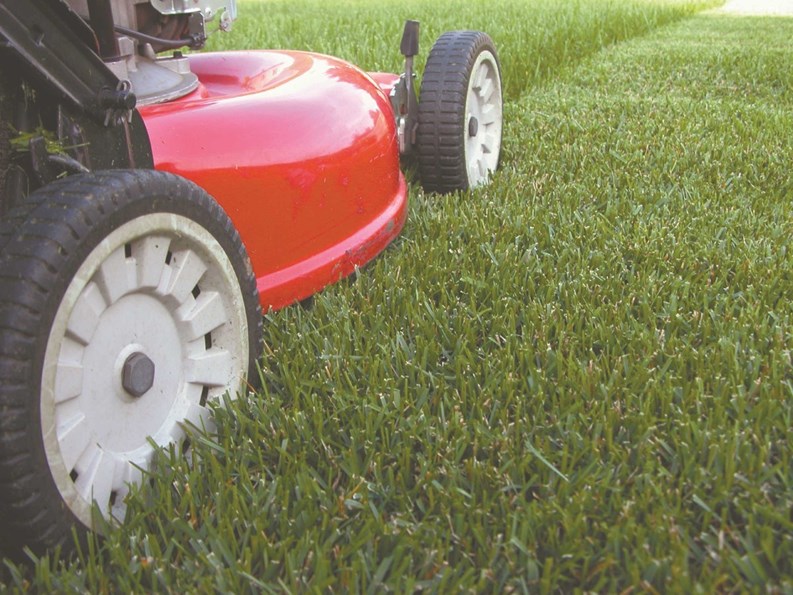These days, nearly everybody is looking for ways to save money. Like many families, some community associations are now dealing with the consequences of not having been thrifty in the past, and searching for ways to pare back their bottom line. Sometimes, the lack of available maintenance funds during tough economic times can take members of an HOA by surprise. As a result, crucial expenditures—such as landscape maintenance—are the first to be cut.
While lawn, shrub, and tree maintenance might seem more like luxuries than necessities, failure to properly maintain a community’s landscaping can result in lower property values, longer listing times for units that are for sale, and more complicated and expensive landscaping problems in the future. Curb appeal isn’t just a phrase that realtors like to use; it’s also a selling point that is essential to a community’s livelihood, especially in a depressed real estate market where sales are sluggish.
Since every bit of extra value offered by a community helps to attract buyers, it’s important to remember that having clean, well-tended grounds can be one of the first visual clues a buyer will have regarding how well the community is managed overall. Sub-par landscape maintenance sends a distinctly negative message to visitors and prospective buyers, but conversely, manicured lawns and trees tell the potential buyer that the community is professionally managed, and that property values will likely increase over time.
Landscaping Costs
Calculating the average HOA’s annual landscaping expenses is difficult, since the landscape schemes in communities are as diverse and varied as the structures in those communities. According to Bruce Hellerick, a senior horticulturist with The Brickman Group, which is headquartered in Langhorne, Pennsylvania and has offices in New Jersey, a community’s costs depend upon both the architecture of their landscaping and the priorities and expectations of residents. How ornate do association members want their landscaping to be? How often they want it maintained? How much money are they prepared to allot for its upkeep? Hellerick suggests that communities wanting to cut back their landscaping costs discuss the matter with their landscape contractor to find ways to save.
“Things change in a condo or homeowner’s association,” Hellerick says. “If you’re getting pinched, you can go to a good landscape manager to reduce your landscaping budget. It’s about communicating with each other.”
Usually, landscaping contractors will charge a community a flat monthly rate to perform certain services. Landscaping contracts usually specify the number of visits that will be required throughout the year, as well as how often weeding, edging, and other tasks are to be done. Depending upon the community’s size and the extent of its landscaping, its annual grounds-keeping costs might be as low as $1,000 or as high as $200,000, says Lou Avolio, owner of Lou’s Landscaping, in Wayne.
Spending less on a community’s landscaping budget often is one of the first things that community leaders will consider when trying to cut maintenance costs. That’s because for most HOAs, the landscaping budget is the community’s biggest expense. A community’s landscaping budget usually includes a variety of services, including turf care, shrub pruning, mulching, weed control, tree trimming, planting annual flowers, irrigation and snow removal.
One problem that is typical for a community trying to reduce its landscaping costs is the fact that a community with a mature landscape plan usually is somewhat stuck with its current landscape. Major alterations to such a landscape can cost more than they’re worth, or can end up costing the community more than it saves from the changes. Often, it’s smarter for a community to work with the landscape plan it has, rather than drastically altering that landscape. Certain elements of an established landscape, such as mature trees, sometimes are best left untouched. But other parts of the landscape can be altered to economize, Hellerick says.
Paring Back
A common place to start such landscape alterations is by cutting back vegetation that has grown out of scale.
“Older properties with overgrown shrubs could remove them and put in trees and turf in their place,” Hellerick says. “That will make the property appear fresher, and younger.”
Trimming a community’s landscaping costs is largely about making smart choices. Some communities will shut off their irrigation systems in order to save money on water costs. Such a move will work for some lawns that are more drought-resistant, but it can be devastating to other lawns. Drought-resistant lawns comprised of a mix of various hearty grass species, may go brown and dormant without water but still survive to the next rainfall. Others won’t survive without regular watering.
Some communities might not have the right type of lawn to shut off the irrigation system and still keep the lawn alive. Others might find the look of a brown lawn to be unacceptable. For such communities, one way to cut back on turf care is by having the lawn cut less frequently. A community should consult its landscaper to know what type of lawn it has before shutting off the irrigation system.
Landscapers usually work under contracts that require them to make weekly service visits from the months of April to into November. Those visits usually include anywhere from 28 to 32 cuts of the lawn, says Aaron Kurdyla, director of operations for High Tech Landscapes, in Branchburg. Some communities might not mind having their lawns cut every other week versus every week, he says.
Other areas of landscaping in which a community might economize include chemical applications to the soil, lawn, shrubs or trees, Kurdyla says. “Some smaller, less professional landscapers use chemicals improperly. That’s why they have licensing for chemical applications. Always make sure that your landscaper is licensed,” he says.
Proper use of other landscaping materials is another way to ensure that a community is getting the best bang for its landscaping bucks.
“Use smart mulching,” Kurdyla says. “Just apply the proper amount to keep the mulch functioning to contain water and control weeds. Maintain a level of 2 to 4 inches of mulch in each bed.”
Large, overgrown bushes such as junipers and yews that are growing up against the buildings in a community also are a common place to cut back, literally and figuratively.
“That vegetation is out of scale with the design. If you remove it, your building and property look larger,” Hellerick says.
Certain bushes are more conducive to being trimmed heavily, such as woody bushes like rhododendrons, azaleas, and barberry. Other shrubs are best left alone, since removing them or cutting them back will create gaping holes in the landscape, ruining the property’s overall look.
To save money on landscaping materials costs, a community can have its maintenance crew (or landscaper) split up established perennials, or even slice up such plants into four smaller plants per perennial, and re-plant them in flower beds throughout the property, Avolio says. Such a change can remove the need for planting loads of annual flowers each year. The savings could be significant, depending upon the size of the community.
Don’t Cut These
It’s smart for a community to try to economize when times are tough, but half of the battle with economizing is saving money only where a community can afford to—that is, where it makes sense to do so. Cutting back on costs by using cheaper landscaping materials can be foolish, Kurdyla says.
“You want to use a good hardwood mulch, not a cheaper one. This is one of those instance where quality rises to the top,” Kurdyla says, noting that cheaper mulches won’t work properly and can do more harm than good. “A lot of smaller companies will do the work with cheaper mulch, or perform the work improperly.”
While many communities budget little or no money for annual tree pruning, proper maintenance of trees is essential to their long-term health. An unmonitored tree might become blighted and quickly die, creating the expensive job of removing the dead tree. So while feeding and pruning the tree less could be a good idea, the tree still should be monitored by experts who will be able to spot potential problems. Generally, though, younger trees require more regular care than older, established trees.
“If the tree is mature and looks healthy, you can monitor it and give it less care,” Kurdyla says. “When you have cash reserves, feed and prune the tree for long-term health.”
A community also can save money on its landscaping budget by looking to the future, and negotiating with its landscaper for a longer-term contract. While the average landscape services contract for a community is 2 to 3 years long, landscapers will negotiate for longer contracts. If a community is happy with the price and performance of its landscaper, community members might be wise to try to get a 5 to 7 year contract with the company, Kurdyla advises. “That way, you can lock in prices.”
Simply put, community members might save a lot of money and beautifytheir landscape by reassessing the needs of the landscape. Consulting with the experts is important for a community to get an accurate assessment of its landscape. “It’s about using proper management techniques,” Kurdyla says.
Jonathan Barnes is a freelance writer and a frequent contributor toThe New Jersey Cooperator.






Leave a Comment